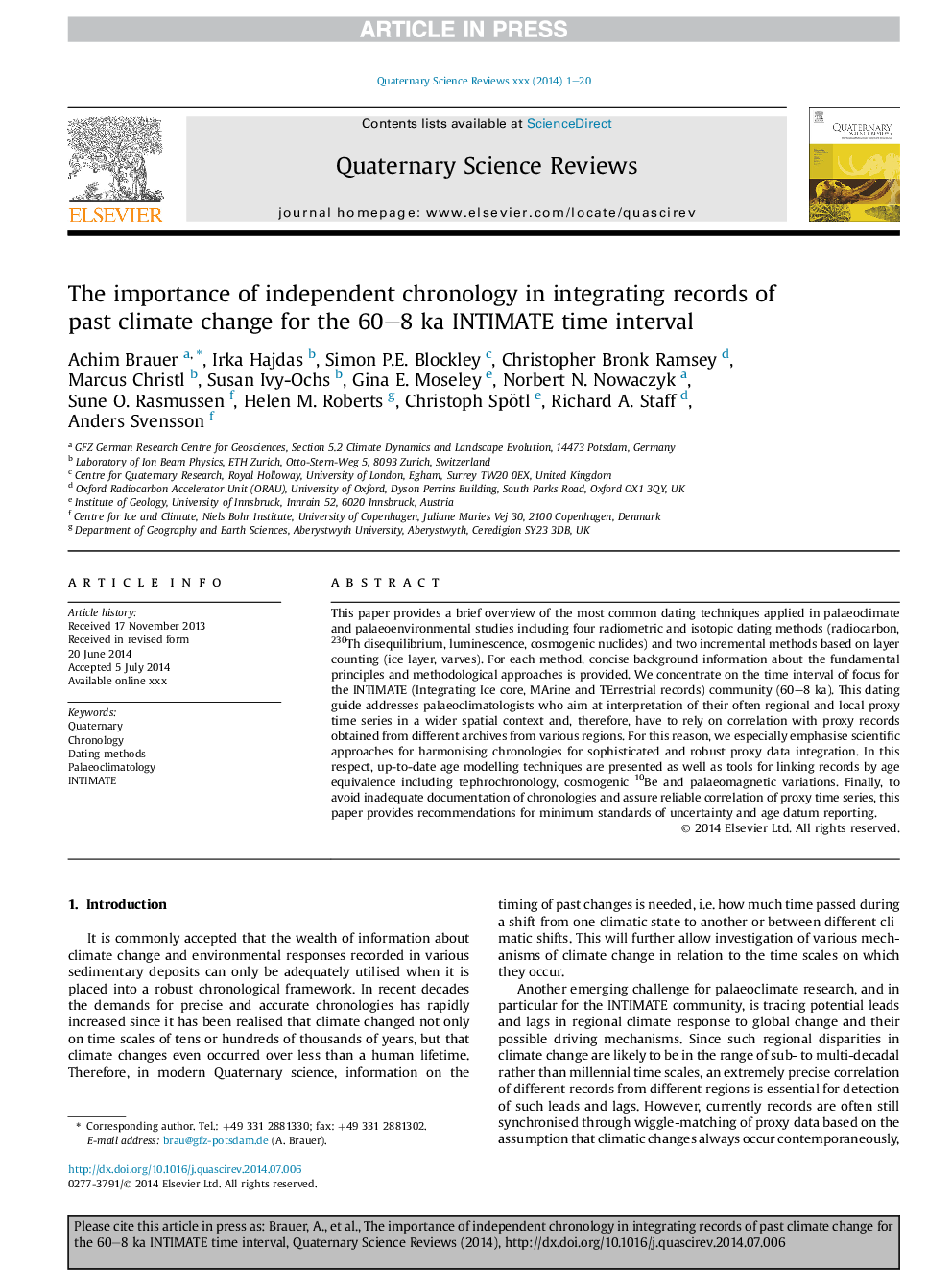| Article ID | Journal | Published Year | Pages | File Type |
|---|---|---|---|---|
| 6446079 | Quaternary Science Reviews | 2014 | 20 Pages |
Abstract
This paper provides a brief overview of the most common dating techniques applied in palaeoclimate and palaeoenvironmental studies including four radiometric and isotopic dating methods (radiocarbon, 230Th disequilibrium, luminescence, cosmogenic nuclides) and two incremental methods based on layer counting (ice layer, varves). For each method, concise background information about the fundamental principles and methodological approaches is provided. We concentrate on the time interval of focus for the INTIMATE (Integrating Ice core, MArine and TErrestrial records) community (60-8Â ka). This dating guide addresses palaeoclimatologists who aim at interpretation of their often regional and local proxy time series in a wider spatial context and, therefore, have to rely on correlation with proxy records obtained from different archives from various regions. For this reason, we especially emphasise scientific approaches for harmonising chronologies for sophisticated and robust proxy data integration. In this respect, up-to-date age modelling techniques are presented as well as tools for linking records by age equivalence including tephrochronology, cosmogenic 10Be and palaeomagnetic variations. Finally, to avoid inadequate documentation of chronologies and assure reliable correlation of proxy time series, this paper provides recommendations for minimum standards of uncertainty and age datum reporting.
Related Topics
Physical Sciences and Engineering
Earth and Planetary Sciences
Geology
Authors
Achim Brauer, Irka Hajdas, Simon P.E. Blockley, Christopher Bronk Ramsey, Marcus Christl, Susan Ivy-Ochs, Gina E. Moseley, Norbert N. Nowaczyk, Sune O. Rasmussen, Helen M. Roberts, Christoph Spötl, Richard A. Staff, Anders Svensson,
